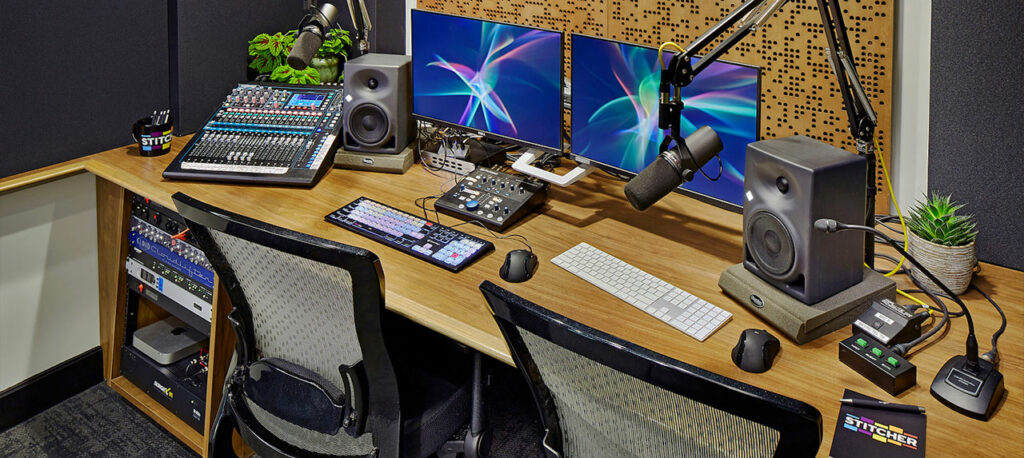
Serving the Audio Prosumer
Ended soon
An old cliche tells us that a rising tide lifts all boats. The home audio industry could certainly use the lift. Over the past two decades, technological disruption has decimated multiple product categories. The tide may be rising again, thanks to shifting market trends and new opportunities for manufacturers. Are you thinking of products for the audio prosumer?
What’s a Prosumer?
The CE industry has been using this word since the introduction of the camcorder in the mid-1980s. Back then, professional applications that you could accomplish with consumer gear (hence the “prosumer) represented a major breakthrough – think of how many “professional” wedding videos were shot with a camcorder. In the years since then, the lines between pro and consumer have blurred beyond recognition. These days, Oscar-winning directors sometimes shoot feature films with a smartphone.
How does this trend port to audio? To name one example, there are 2 million podcasts worldwide, most done outside of a full-fledged “professional” studio. Apple and Spotify both claim 28 million podcast listeners every month. These audio “makers” buy lots of recording and post-production gear. Their numbers can no longer be ignored as a niche. Podcasting is already a $2 billion business and forecasted to double by 2024. And podcasting is just one application.
One Door Closes…
Let’s set the Wayback Machine back 10 years. The home theater boom that began with the big-screen TV bull market is already slowing down. The receiver — once the essential home audio product — is going out of style. Six speaker Dolby Digital setups are getting serious competition from soundbars, which are fast becoming the preferred option for many consumers. Disc players? Everyone had one, of course. Today, kids can’t figure out how they work, or why they don’t connect to Wi-Fi.
Cut to now. The recent vinyl resurgence has been only a small ray of optimism. The good news there is that a substantial number of young consumers – the drivers — have proven they’re willing to pay for a better audio experience. The bad news is that the dollar uptick from turntables is a drop in the ocean, and according to NPD data, sales are already down 11% from last year.
In the wake of the disruptions, many manufacturers turned their attention to custom installation products. Most “audio” dealers these days wouldn’t be in business without CI, which leads to additional revenue opportunities in services and future products. CI was and is a logical solution, but the audio prosumer community is large, fast-growing and largely untapped by the traditional home audio brands.
…Another Opens
Let’s look at this “creator” market. That includes podcasters, musicians, DJs and home studio producer/engineers, most of them non-professionals. During the pandemic lockdowns, the musical instrument (MI) industry boomed like Beatlemania. According to data from Music Trades, retailers logged $8.9 billion in instrument and gear sales in 2021, a whopping 22% rise. Instruments were the big winners, but monitors, mixers, processors, interfaces and other audio products were all strong sellers.
Think of how interchangeable some of these products are to what the industry now calls “home audio.” Passive and powered speakers? A list of the best-selling prosumer products won’t include stalwarts like Klipsch and KEF. Instead, names like PreSonus, M-Audio and Edifier are running the table. If you have to ask who these guys are, our point has been made.
Crossover Is Beautiful
We think there’s a lot of opportunity to be had in serving the audio prosumer. These are customers that are clearly interested in achieving good sound quality. Unlike many mainstream consumers, they’re comfortable operating technology. Sales to this segment aren’t dependent on additional custom integration and programming services. The typical maker communities are helpful and supportive of each other; the manufacturer no longer must bear the entire support load alone.
Savvy “pro” companies from the MI industry have already travelled this road from the opposite direction. Last year, British audio legend Rupert Neve entered the US “high end” hi-fi market with the Fidelice line of home audio. This comes after Neve had already introduced the very affordable Focusrite brand of home studio gear that today dominates its market segments. Santa Monica-based Apogee started out in the early days of digital audio with state-of-the-art filters for big-ticket studio recorders from Sony and Mitsubishi. These days, they also offer a budget-friendly DAC for smartphones.
New markets and customers call for bold new products and approaches. It’s been a long winter for the home audio industry, but between prosumers, spatial audio, hearables and emerging AR/VR applications, fresh opportunities are knocking again. The last audio revolution was about listening. This one will be about much more.
# # #

David Kaplan was the recipient of the 2019 CTA TechHome Leadership Award. His work at the executive level has involved the complete commercial cycles of the high technology industry with a focus on audio technology and channels, including expertise in purchasing, merchandising, and new product introduction.
